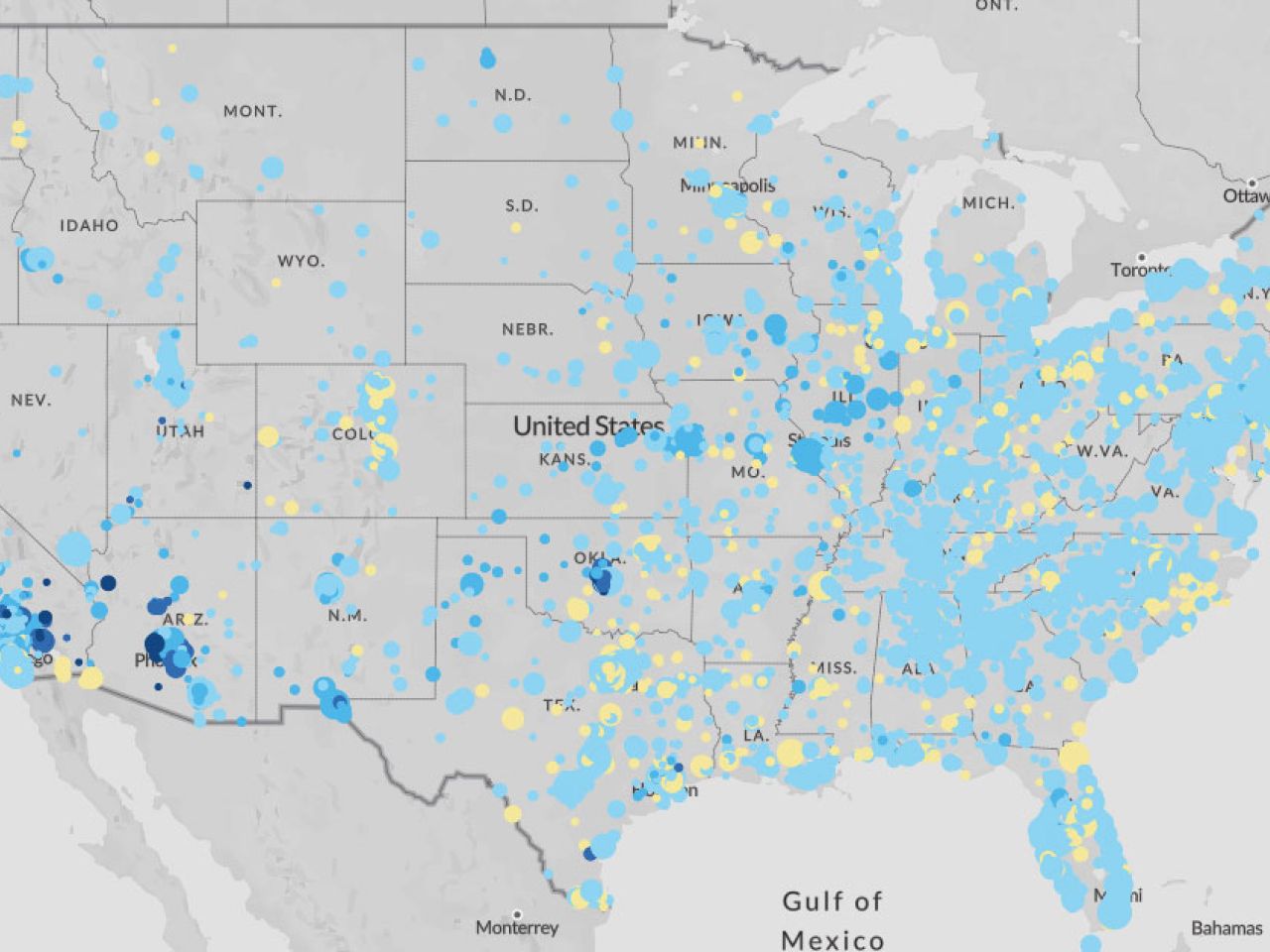WASHINGTON – On Thursday, the Environmental Protection Agency published a draft toxicology assessment of hexavalent chromium – the cancer-causing chemical made notorious by the film “Erin Brockovich” – finding it likely carcinogenic in drinking water.
The EPA findings reaffirm the agency’s draft review from 2010 that said when hexavalent chromium, also known as chromium-6, is ingested it is likely carcinogenic. The agency’s final version of the toxicity assessment has been delayed for more than a decade because of industry comments, industry-funded studies and lobbying efforts.
“After reviewing the science, the EPA’s conclusion has not changed – chromium-6 likely causes cancer when it is ingested,” said David Andrews, Ph.D., a senior scientist at the Environmental Working Group. “Although polluters have successfully hampered the process, it is encouraging that the EPA is finally developing a safe exposure value for chromium-6 in water.”
The agency’s first draft health assessment for chromium-6, released in 2010, concluded that relatively low doses of the chemical could increase cancer risk.
“A completed human health assessment of chromium-6 will set the stage for a health-protective drinking water standard for this carcinogen. A national drinking water standard specific to chromium-6 is urgently needed,” Andrews said.
Chromium-6 particles are carcinogenic when inhaled, increasing the risk of lung cancer. The effects of swallowing chromium-6 in tap water had been less clear but strongly linked to stomach cancer, liver damage, reproductive problems and harm to children's brain development.
The current drinking water limit for total chromium is based on the potential for skin rashes.
There are no federal rules limiting chromium-6 in drinking water.
Health risks
The EPA has a drinking water standard of 100 parts per billion, or ppb, for total chromium, which includes all forms of chromium, including chromium-6. That standard is based on potential dermatological harm over many years, such as allergic dermatitis and other skin reactions.
In 2008, the National Toxicology Program, or NTP, found long-term exposure to chromium-6 led to a significant increase in stomach and intestinal tumors in rats and mice. The EPA in 2008 then began its review of the harmful health effects linked to exposure to chromium-6 in drinking water.
California’s Office of Environmental Health Hazard Assessment calculated a public health goal of 0.02 ppb for chromium-6 in drinking water that was based on the NTP’s studies, published in 2011.
In 2015, California scientists reported an increased risk of stomach cancer in workers exposed to chromium-6.
Chronic exposure to chromium-6 in drinking water can also damage the liver and reproductive systems, and lower the body weight and delay skeletal development of the offspring of lab animals exposed to the chemical.
Scientists have identified infants, children and people taking antacids, as well as people with poorly functioning livers, as being at greater risk from chromium-6 exposure.
Found in tap water of more than 250 million Americans
In March, EWG updated its interactive map that showed chromium-6 contaminates tap water serving 251 million people, often exceeding levels scientists say are safe. Researchers analyzed federal and state water testing data to create the map.
“Too many people are exposed to chromium-6 in their drinking water,” said Tasha Stoiber, Ph.D., a senior scientist at EWG. “Communities across the country have water with potentially harmful levels of this carcinogen.”
From 2013 to 2015, the EPA required larger water utilities in the U.S. to test for chromium-6. The EWG map is powered by those detection results, as well as recent tests by the state of California that found 918 new detections.
In November 2021, EWG updated its tap water database, revealing more than 8,600 water utilities that detected chromium-6 in their water. You can find out whether your tap water is contaminated by searching for your ZIP code using our Tap Water Database.
Some of the states reporting levels of the carcinogen in tap water above health guidelines include California, Florida, Illinois, New York and Texas. The pollution problem exists nationwide.
Chromium-6 can be difficult to remove from drinking water, but ion-exchange resins and reverse osmosis water filters are effective. Consumers can look for filters certified to remove chromium-6.
Contamination can occur from the improper disposal of industrial wastes. Chromium-6 is also a naturally occurring metallic element and can enter water sources through erosion from natural deposits. It is used in pigment manufacturing, metal finishing and other industrial processes, and is emitted into the air by burning fossil fuels.
The agency’s draft review is open for public comment until December 19. Once finalized, the review will be the scientific underpinning of the EPA’s assessment of risks associated with exposure to chromium-6. EWG would like to see the agency move quickly to set health protective drinking water limits.
###
The Environmental Working Group is a nonprofit, non-partisan organization that empowers people to live healthier lives in a healthier environment. Through research, advocacy and unique education tools, EWG drives consumer choice and civic action





